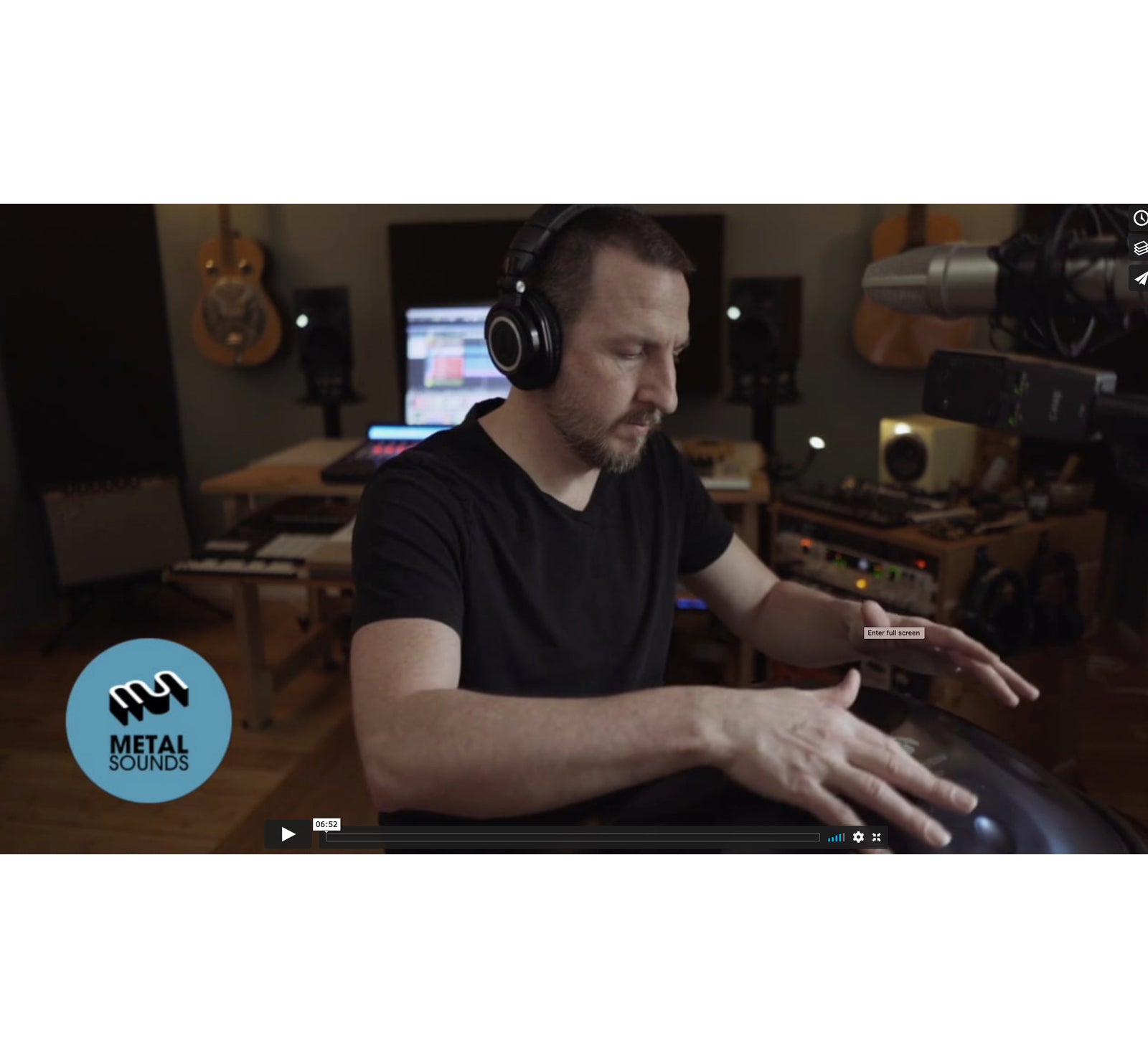

In this 7-minute video, acclaimed Producer and Composer Todd Boston talks about the the differences between the Metal Sounds Spacedrum Nitro and Spacedrum Evolution - offering his impressions on what makes each model possess a unique sound quality.
Todd demonstrates playing the Spacedrum Nitro in the Amara tuning (d minor). "There's some type of pure tone happening with this Nitro design that really strikes me... it's the kind of instrument you can lose yourself in. It's for beginners to extreme advanced, from melodic musicians to percussive musicians, from somebody that wants to do sound healing, or bring something into their electronic mix, or anything for unique songwriting, I mean it's just an instrument that I believe is for anybody, really!"
Todd next plays the Spacedrum Evolution also in d minor, which as he describes "is made of a different material so it has a different sonic fingerprint." (the Nitro is made of nitrated steel and the Evolution is made of stainless steel) "To me, the sound of the Evolution is deeper, the drum feels heavier, the tones ring out in a more broad way, whereas the tone of the Nitro I would describe as tighter... I feel like the overtones blend together a little bit more in the Evolution, where with the Nitro they kind of pop out in a different way.

Towards the end of the video, Todd offers tips on how to best mic the sound of handspans using the mid side mic technique. If you like to geek out on technology or are an audio engineer... read on:
"This involves using one mic with a figure eight polar pattern together with a large diaphragm condenser mic. The condenser works as the "mid signal": picking up the instrument from the middle point. For the channel the figure-eight mic is being recorded to, in your DAW you duplicate the channel, then you take one of the channels and phase flip it. The figure-eight pickup pattern then becomes a left and a right pickup pattern. Thus, this side mic creates the stereo image and the mid mic is picking up the middle. So when you combine those together, you can blend in how much of the side you get to expand the basic stereo field, or you can narrow the field down. One of the best things about recording this particular instrument and acoustic instruments in general in stereo is you want to get a three-dimensional kind of recording so that the depth of the instrument is expressed. This particular mixing technique does that really well because of the design of this instrument, and it also collapses to mono without phasing issues which is important. In this video recording you can hear the left-right signals and how they create this depth and dimension - this sounds really good on headphones, or in front of some good left-right speakers."
Learn more about Todd Boston and check out his new album featuring some of our instruments at: toddboston.com
Need tech assistance to record, your instruments or setup your sound system for live-streaming and online events? You can book an audio consultation with Todd here: Book Todd for Tech Consulting